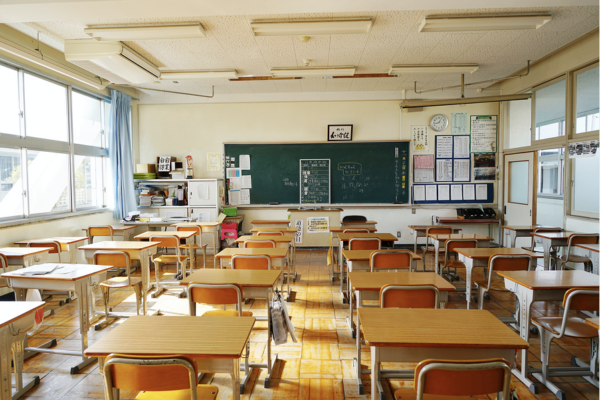Without the need to pay for bus fuel, substitute teachers or school supplies, districts must be able to sock away some money during school closures this year, right? Or are additional costs such as food distribution and hazard pay absorbing potential savings?
With severe budget cuts looming for school districts, every dollar they can save this year is one dollar less that must be cut next year. So, understanding just what the financial situation for school districts is right now is critical for district leaders and policymakers as they work through budget scenarios.
To explore how COVID-19 impacted school systems’ end-of-year finances, Education Resource Strategies worked with finance leaders in four large urban districts to examine their district expenditures. Our findings show that school systems are expecting, at best, net savings of 2 to 3 percent of their total operating budget relative to planned expenditures.
With salaries and benefits making up approximately 70 percent of district costs, furloughs or reductions in positions would have been the biggest potential source of savings. But, given the timing of the pandemic late in the school year, the unpredictability of its duration, the need to support students and families through the crisis, the transition to remote learning, and the role of some districts in the overall economic well-being of their community, our research shows that most districts did not make deep cuts.
[Read More: Capturing FY20 Savings (Or Not) in School Districts]
The areas where districts were able to save money include:
- Substitute Pay: One district stopped pay for all except long-term substitutes, which accounted for almost one-third of all savings. Another district we studied continued paying all subs based on the average rate that they had worked to date, while exploring ways to repurpose these teachers to support remote instructional needs.
- Stipends and Overtime: Most districts were able to save marginally on stipends and overtime for work that was no longer needed, such as athletics coaching, event support, and summer school.
- Transportation: The most common savings in transportation came from fuel costs and supplies. One district saved close to $9 million in public transit passes.
- Contracts: Two districts we studied proactively reviewed their largest contracts and only continued to pay vendors who could provide replacement services, such as social-emotional and mental health providers.
- Supplies and Equipment: Some districts captured savings by implementing purchasing freezes shortly after schools closed and only making essential purchases.
At the same time, districts saw costs increase in areas related to technology and food services, such as:
- Technology and Virtual Learning: In all four districts, many students lacked internet access or devices needed for virtual learning. For example, one district we studied spent $11 million (about half a 1 percent of its total operating budget) to purchase devices for nearly a quarter of students. The district also paid workers overtime to support students and families with technology use and incurred costs related to printing and distributing learning materials. On the other hand, another district incurred minimal new costs by repurposing existing devices and working with local partners to establish Wi-Fi hotspots.
- Food Service: After schools closed, many districts became meal centers. Those extra meals are not currently reimbursable under federal policy. In the words of one district leader, “We’re feeding our city. We don’t check names; we don’t check for school-aged kids. We’re getting reimbursed for half and going over budget by about $5 million.”
- Other: In addition to direct costs associated with virtual learning and meals, many school systems faced unplanned expenses in hazard pay for front-line workers, sanitation equipment, and in the case of one district, vandalism incidents at closed school sites that are expected to result in a $1 million risk management loss.
The bottom line is that state and federal leaders should not expect to save much money from the past school year and should plan accordingly, recognizing that districts serving high-need communities will likely face greater challenges in supporting their students.
[Read More: Inside Post-Covid Schools, Next Year and Beyond]
Tiffany Zhou is a principal associate at Education Resource Strategies, a national nonprofit that partners with district, school and state leaders to transform how they use resources (people, time and money.)
FY20 Projections in Four School Districts
| District A | District B | District C | District D | |
| Savings | 2.7% | 3.4% | 0.8% | 0.9% |
| Substitutes | 0.7% | 0.8% | 0.0% | 0.1% |
| Hourly Pay | 0.3% | 0.0% | 0.1% | 0.0% |
| Stipends and Overtime | 0.2% | 0.3% | 0.2% | 0.0% |
| Supplies and Equipment | 0.3% | 0.3% | 0.2% | 0.0% |
| Transportation | 0.2% | 0.7% | 0.1% | 0.2% |
| Contracts | 0.4% | 0.4% | 0.0% | 0.3% |
| Utilities | 0.0% | 0.3% | 0.1% | 0.3% |
| Hiring Freeze | 0.2% | 0.3% | N/A | N/A |
| School Site Carryover | 0.3% | 0.3% | 0.2% | 0.0% |
| New Expenditures | -0.7% | -1.1% | -0.1% | -0.1% |
| Food Service (Unreimbursed Meals) | -0.3% | -0.3% | 0.0% | 0.0% |
| Technology and Virtual Learning | -0.3% | -0.5% | 0.0% | -0.1% |
| Other (Hazard Pay, Sanitation, etc.) | -0.2% | -0.3% | -0.1% | 0.0% |
| Net Savings for SY19-20 | 2.1% | 2.3% | 0.7% | 0.9% |


